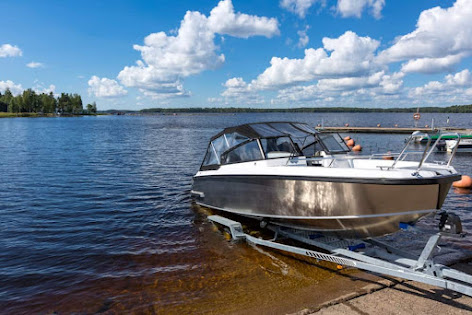Things to Look for when choosing a FishFinder
If you are looking to buy your first fish finder for boat, you may get lost in all the technical talk. Looking at all the different functions and features can be overwhelming for a first-time buyer. Between the different types of transducers, flashers, echoes, sonar, and other things, it's hard to make sense of it all.
For this reason, we've gone ahead and put together this fish
finder guide to simplify the process for everyone. We'll demystify some of the
terms and keep you updated on the latest developments. This way you can be
confident that you are making the right decision when you finally pull the
trigger and purchase yourself a fish finder.
These are the essential things to look for when choosing a
fishfinder for boating. The items on this list will help you narrow down your search and
choose the fish finder that best meets your needs. We've also put together a
list of the best fish finders of 2022.
Power Transducer
Power transducers are an essential part for every fish
finder. They transmit and receive sonar waves. These waves, once released in
the water, bounce off various objects. Then, they are captured by the
transducer. When data returns, it goes to the central unit. This is where these
signals are processed into an on-screen image that you can see and understand.
Power Adapters
Power adapters come with various types of mounts. The easiest way to install is a transverse mount. However, if you have a larger boat or need something more serious, you can choose another type, such as through-hull installation.
Transducer Material
Depending on the type of boat you are going to use, you need to choose the right transducer material. For avid anglers and casual fishermen, a plastic cross-section holder will do just fine. They are compatible with almost all types of boats. If you are using a transducer with a through-chassis or in-chassis mount, the fiberglass or metal enclosures require plastic housings.
Aluminum or steel structures need stainless steel casings. Bronze housings
are intended for boats with fiberglass wood hulls. When it comes to
recreational users, most fish finders are equipped with either trolling motor
transducers or transducers with transom mounts. These work with almost any type
of boat, you just need to be sure to follow the installation instructions.
Beams and Cone Angles
When selecting a transducer, an important aspect to take into consideration is the cone angle. In other words, the cone angle tells you the width of the beam being emitted from your boat into the water. A wider cone means a larger area is covered. As the beam decreases, the cone angle expands, but at the cost of sensitivity in deeper water.
An interesting feature when it comes to power transformers is that they can emit more than one cone from a single point. There is one beam with a traditional transformer, but with more advanced units you can have multiple beams. Some have a double beam, some have a triple beam, some have a side beam, etc. With every new beam, you can cover more area. More beams are ideal for larger bodies of water, like lakes.
Screen Resolution

You should target at least 240 x 160 pixels. But even with this resolution, you might feel like you're playing Tetris instead of finding fish. If you can save the money, it's worth paying more for a higher resolution display. It will give you more details and give you clear pictures.
Related Articles:





Comments
Post a Comment